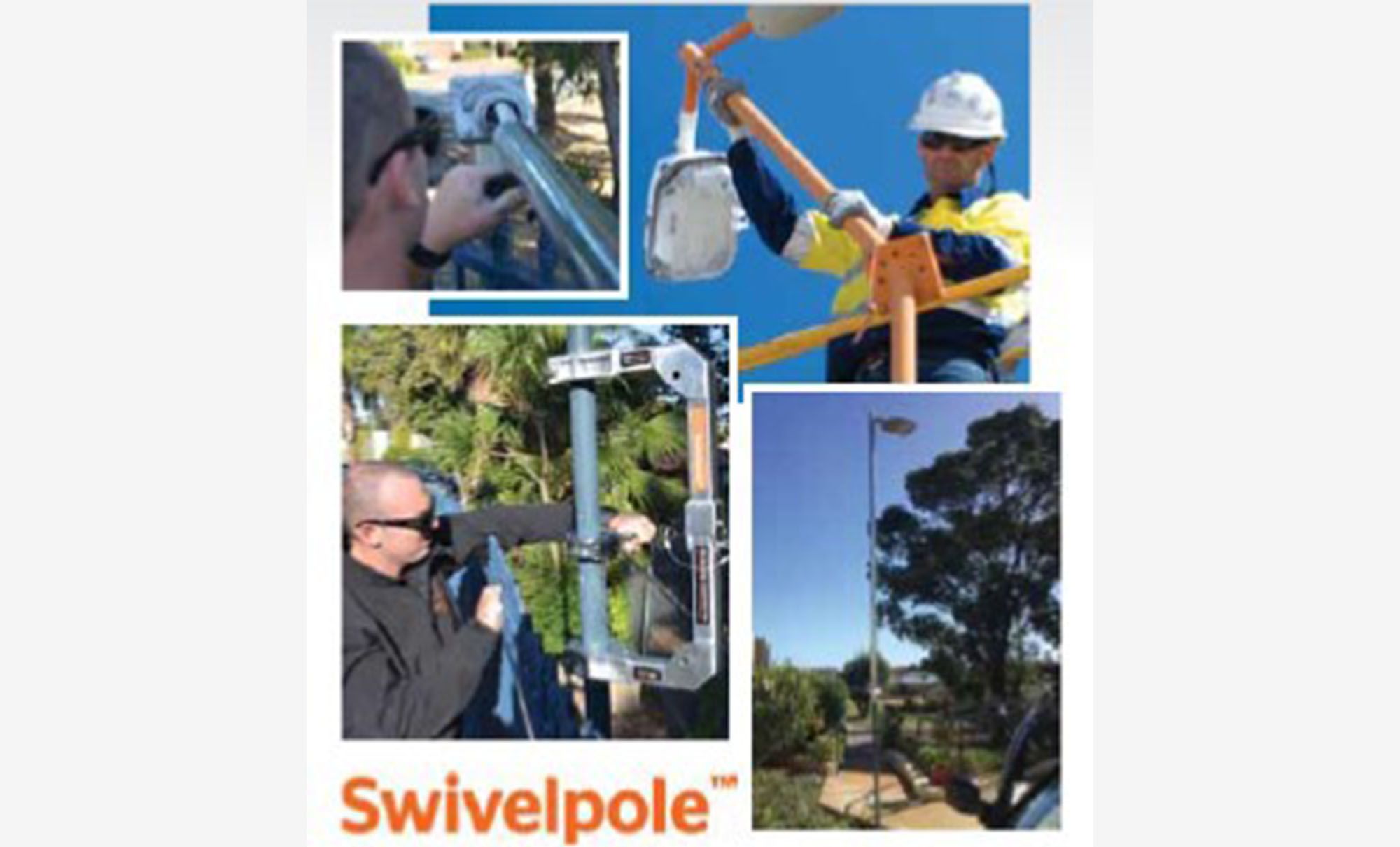Article by Brian Feron | Originally published in Dialogue Magazine, Issue 39; September 2017 (A Publication of the Ontario Electrical League)
With ladders not an option for many commercial sites due to safety concerns, equipment such as cherry pickers or scaffolds are often used. With this equipment comes higher costs, such as needing additional people to operate the equipment safely as well as the need for safety harnesses, which all add to the overall project cost.
Scaffolding is difficult to justify, as it needs to be set up around each individual pole, making it a slow, laborious and very expensive option. The operator then needs to work outside any railings and often at difficult angles to the location of the light. Cherry pickers and elevating work platforms (EWP) also have similar limitations, as well as the issue of getting the boom up high enough to complete the work.
Stairwells, platforms, high wind areas, high clash situations or where other obstructions are hard to avoid (fences, parked cars, etc.) mean it’s impossible to even consider the use of heavy equipment, which results in ignoring the problem instead of fixing it.
What is the solution?
Many large global companies, such as those in mining or oil and gas, have made the conversion to lowering poles using a swivel joint, to achieve cost savings as well as improve safety on site. A swivel joint allows these companies the ability to access equipment, without having to shut down large parts of the operation, divert resources to conduct this work or take longer than necessary to complete.
Swivel joints offer solutions to many pole-mounted access equipment, such as in carparks, sports fields, on jetties, in driveways, and much more. Mounting systems are also available for all the popular makes and models of lighting, security, sensors, alarms and other equipment.
A case study: Carpark lighting in a Resort
Until recently, a large resort in a popular coastal city, wanted to upgrade carpark lighting due to the age of existing lamps and to improve guest and staff safety at night.
The manager calculated the cost to be around $1,000 per lamp, plus the cost of the new luminaire. A contractor introduced the resort manager to the idea of converting the existing fixed poles to lowering poles for lamp maintenance. The system was demonstrated on the first pole, and the owner was amazed that one person not only converted the pole, but then changed the lighting to new brighter, cost saving LEDs.
The remaining poles were then changed over, and lighting upgraded in a staged rollout across the resort. The resort manager also changed his flagpoles to lowering poles to secure the flags which were being regularly stolen.
Helping cash flow
The advantage of upgrading or installing poles in a staged approach is easy to justify to the end-customer, as they can avoid shutting down, stopping business or even working off-hours to avoid negative impacts on business (at higher penalty rates).
Is it an expensive option?
Electrical contractors have the option of full pole solutions for new sites, or just components needed to build-your-own lowering pole. Even more cost effective, is the ability to convert a pole to a lowering pole, without any impact on the existing wiring integrity.
How difficult is it to install?
Like anything, there is a learning process, and the first few conversions or installations may take longer. Once familiar with the process, it can take as little as 30 minutes for the conversion and the upgrade of equipment. This means that instead of upgrading 3–4 poles a day, they could do 12–16.
If you would like more information, go to www.swivelpole.com, email us at sales@swivelpole.com
